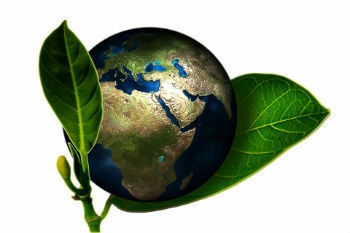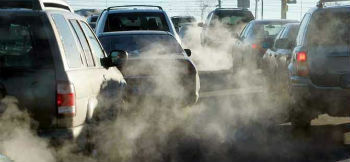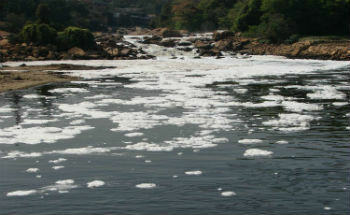Biodiversity means the variety of life and encompasses the richness of species, the genes they contain and the ecosystems that make up the environment. The concept was initially known for...
World Water Day (DMA) is celebrated on March 22nd. The date was established by the United Nations (UN) on February 21, 1993. The objective was to alert the population...
Conservation Units (CUs) are natural spaces protected by law. These areas have unique characteristics related to the local fauna and flora. It is worth noting that the Units...
Environmental Education represents a set of sustainable actions aimed at environmental conservation. Given its importance, June 3rd is the National Day of...
The Selective Collection is a waste collection mechanism, which is classified according to its origin and deposited in containers indicated by colors. That is, they can be waste...
Hospital waste or health service waste (RSS) are materials discarded by health establishments, whether hospitals, clinics, laboratories, clinics, pharmacies, health posts...
Organic agriculture, also called biological, is a type of alternative agriculture that aims to offer healthy products, prioritizing food quality. Is realized...
There are different types of pollution, which directly affect the balance of the environment. It is worth remembering that human actions have been the main factor in the destruction of many...
The giant otter is a mammalian animal endemic to South America. Its scientific name is Pteronura brasiliensis. It is considered one of the largest carnivores in the South American subcontinent. The expectation...
Household, domestic or residential garbage is any type of waste generated by the inhabitants of the houses, which can be organic materials (food waste, wood, human waste) or...
Agenda 21 is a document signed by 179 countries during the "United Nations Conference on Environment and Development" or "ECO-92", held in the city of Rio de Janeiro. Your...
Renewable energy is energy obtained from sources that regenerate spontaneously or through adequate human intervention. The rapid depletion of energy sources, mainly from...
Drinking water is all water suitable for consumption. Water is a colorless, odorless (odorless), tasteless (tasteless) and tasteless (saltless) liquid, essential for human survival. He must...
Eco-92, Rio-92, Earth Summit or United Nations Conference on Environment and Development was an event that took place in Rio de Janeiro in 1992. The themes of the Conference revolved around...
Radioactive or Nuclear Pollution designates the pollution generated by radiation (radioactive materials). It is considered the worst type of pollution, as it is the most dangerous for the planet. At...
Pesticides, pesticides, pesticides or agrochemicals are synthetic chemical substances used to kill pests, insects, bacteria, fungi and other plants. The use of these...
The ocelot is a mammal of the feline family. Native to America, it is considered the third largest feline on the continent, after the jaguar and the puma. Its scientific name is Leopardus...
Organic waste or organic waste is a type of waste of biological origin (animal or vegetable), which is produced in homes, businesses, schools, among others. Examples of Garbage...
The soil is the layer that covers the earth's surface and is basically formed by organic matter and inorganic matter (solid components) through the action of climatic factors and...
Biofuel is any material used to generate energy from organic biomass for use in internal combustion engines. One of its main advantages is sustainability...
The Steppes are a type of undergrowth herbaceous vegetation formed predominantly of grasses dispersed in immense plains and forming a large plant mat. Steppe in the region of...
Alternative energy sources bring together the forms of energy production that cause less environmental impact on the planet and are therefore little polluting. Alternative energies are derived from...
The mesosphere is one of the layers of the Earth's atmosphere, immediately below the thermosphere and above the stratosphere. It is 80 km high from the Earth's surface and has...
Polluted rivers are those springs that receive in their waters all kinds of polluting residues such as chemical, physical and biological agents. They are harmful to the soil, fauna, flora and...
Garbage or industrial waste is that originating from industries, that is, from the secondary sector. Among all types of garbage, industrial waste has been one of the biggest problems when...
Rio+10, Rio Mais 10 or the World Summit on Sustainable Development, was an event organized by the United Nations (UN) to discuss environmental issues. THE...
Extinct animals are those that have disappeared from nature and captivity. Human action is the main responsible for the disappearance of species. The determination to include an animal in...
The troposphere is the lowest layer of the Earth's atmosphere, being the region in which we live and where meteorological phenomena occur. Its height varies according to the point of distance from the...
The Earth Charter is a document, proposed during Rio-92, focused on issues about a peaceful, just, sustainable global society. She proposes a change of habits to achieve a...
The stratosphere is the second largest layer of the Earth's atmosphere, situated between the troposphere and the mesosphere. It is at an altitude of 50 km from the surface and is home to the ozone layer. O...
Visual pollution is a type of modern pollution, found in large urban centers, as it designates the excess of information contained in signs, posts, billboards, banners, posters,...
Earth Day or World Planet Earth Day is celebrated on April 22nd around the world. The date represents the fight in defense of the environment, promoting reflection on the importance of...
Nuclear waste, radioactive waste or atomic waste is that mainly produced by nuclear power plants. They produce electrical energy through radioactive materials, and the main element...
The Mariana Disaster occurred on November 5, 2015 and was the greatest environmental tragedy in the history of Brazil. The accident was caused by the collapse of the Fundão Dam, used to guard the...
Environmental problems are mainly due to the growth and development of society. Environmental issues should be the focus of attention, mainly due to the impacts...
Biodiesel is a liquid biofuel considered a renewable energy source, which replaces the use of fossil fuels. It is produced from plant or animal sources. That is why,...
Rio Mais 20, Rio 20, Rio+20 or the United Nations Conference on Sustainable Development (UNCSD) is a sustainability event which takes up, after 20 years, several themes that were...
The ozone layer corresponds to a gaseous covering that surrounds and protects the Earth from ultraviolet radiation emitted by the sun's rays. Holes in the ozone layer are regions of...
The thermosphere is the largest layer in the Earth's atmosphere. This is a thermal classification and includes the ionosphere and exosphere. It is located just above the mesopause and extends to 600...
Bioremediation, also called biological remediation, is a technique used to minimize the environmental impacts caused by pollution. Biological agents are used...
Biogas is a biofuel derived from organic materials (biomass) and, therefore, it is an alternative source of energy (renewable or clean energy), which replaces the use of fuels...
The exosphere is the name of the outermost layer of the Earth's atmosphere from the surface, being the one that precedes outer space. It is located above the thermosphere right after the layer...
Animal trafficking is the illegal trade in wild animals that are taken from nature. This is an illegal activity that takes place all over the world. According to the Organization of Nations...
Commercial waste is waste from trade and services, that is, by the third sector. They are produced in several establishments which generate large amounts of...
According to the classification, the types of existing rivers are influenced by factors such as relief, drainage system, runoff and water color. Remember that rivers are courses...
Deforestation in the Amazon is one of the most serious environmental problems in Brazil and it directly affects this biome. Since 2012 it has increased again and the main causes are related...
The environmental liability corresponds to the sum of damages to the environment caused by companies and, consequently, the obligation to repair them. As we know, some types of companies perform their...
The ionosphere is one of the layers of the atmosphere characteristic for suffering ionization from solar radiation. Thus, it is very active and its size decreases according to the energy it absorbs from the Sun. THE...
World Food Day is celebrated on October 16th in different parts of the world. The date was implemented to raise awareness of the importance of healthy, affordable and...
Soil salinization is a process of accumulation of mineral salts (Na+, Ca2+, Mg2+, K+, etc.) in the soil. This increased concentration of salts harms the properties of the soil and...



